 Workbench User Guide
Workbench User Guide
Workbench
The Workbench is the central dashboard and shows all processes that are currently processed by Redwood.
All process details are displayed:
- Parameter values
- Created reports and other results of a process run
- Messages and the progress of their processing
The Workbench enables users to group and filter according to certain criteria to find relevant process data fast. The filters can be stored as personal profiles.
note
Until version 9.2.2 the Workbench works in two modes, Kanban Board Mode and List Mode. Kanban Board Mode has been removed since version 9.2.3.
Open the Workbench
Open the Workbench either from the Home screen or tool bar.

To open the Workbench from the tool bar click on Control Center on the left-hand bar and press the Workbench icon on the tool bar.
The Workbench in List Mode
Workbench in List Mode - Overview
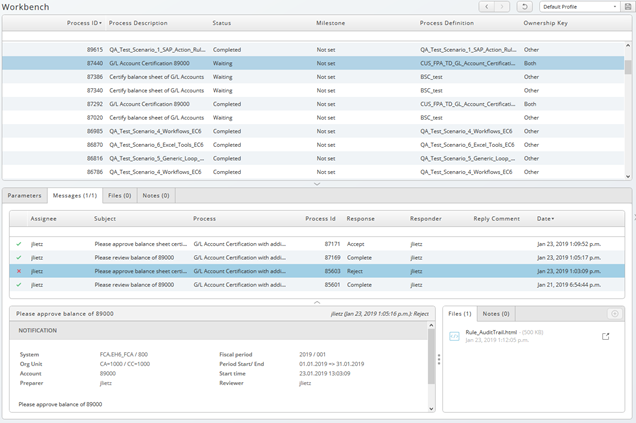
The upper section of the Workbench displays the process runs. The blue highlighted line shows which process run has been selected, and the details in the lower half are related to this selection. The size of the lower sections can also be adjusted. A tooltip indicates when it is possible to drag and drop to resize the sections.
To hide the details, click on the down arrow icon on the upper frame of the details.
It is also possible to use a time-based preselection of processes, for example Show completed processes, to show completed processes of the last hour. To hide completed processes, select Never from the dropdown list and all completed processes will disappear.

To change the layout with the Column Chooser:
- Right click inside the Workbench title bar and select Column Chooser.
- Drag and drop columns from the Available Columns section into the Display Columns section.
- The Display Columns can be reordered by using drag and drop functionality.
- Click OK.
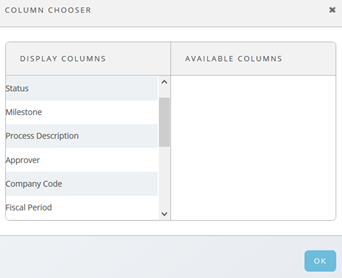
Workbench in List Mode - Filter
- Move the cursor between the column title and the process runs.
- Click on add filter when the tooltip appears.
- Depending on the type of column (data) you can select specific entries, limit a range or search for a text. The filtered value will be shown right next to the filter icon.
The example image below displays a limited range of process IDs. Clicking on the column titles reverses the sort order.
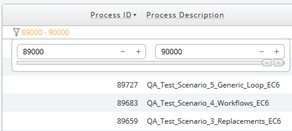
A red cross indicates when deleting is possible. To delete a filter, click on the filter icon.
Workbench in List Mode - Process Details
Select a process in the list and the details will automatically appear in the lower section of the screen. To hide the details, click on the down arrow icon on the upper frame of the details. Click the up arrow icon to expand the details.
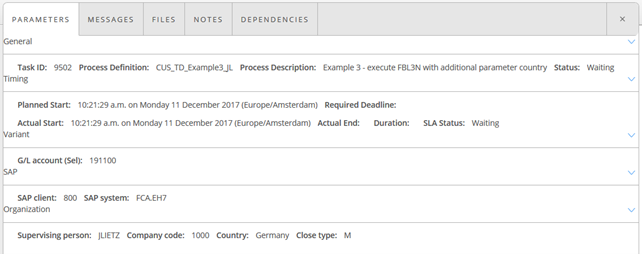
Visible information depends on the design of the process. These are organized in groups and can be expanded or collapsed. In the example image below, an additional group is visible: Infrastructure (Fiscal Year, Fiscal Period and Country).

The Messages tab shows the subject of the message, when it was created, the current assignee, and a link to the Inbox where the response can be given.

Dependencies (Predecessors and Successors) are displayed in the Dependencies tab if applicable. Use the Notes tab to add additional files and notes that may be necessary for further processing or to clarify specific situations.
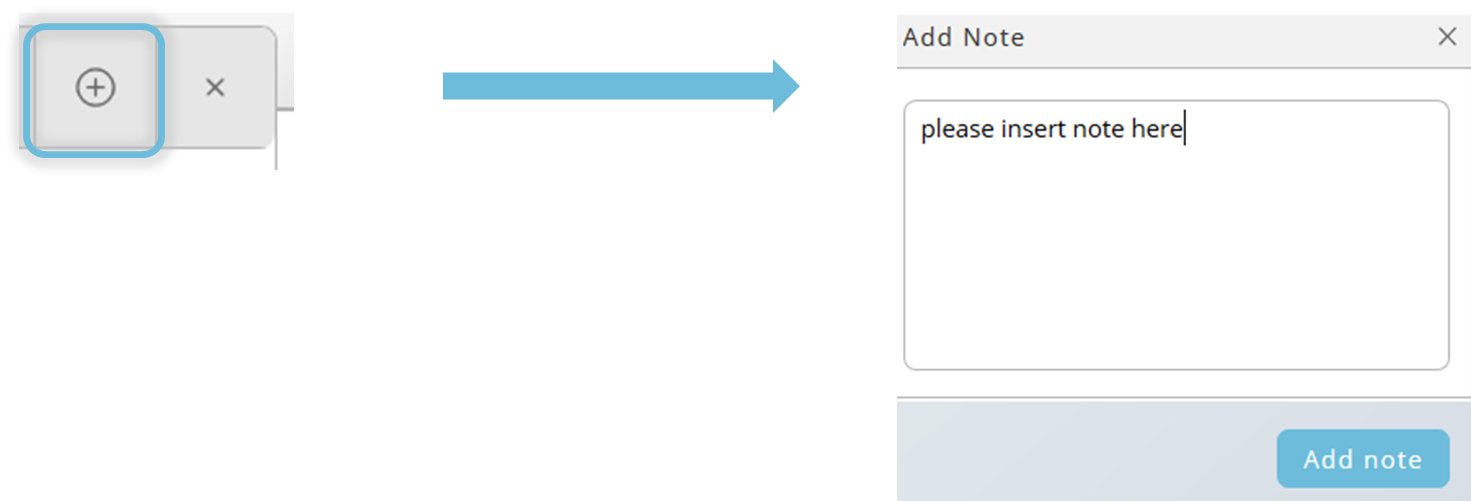
Configuration of Filter and Selection Criteria
The Workbench allows for filtering as well as defining specific filter criteria based on the process parameter.
Filters
To select only particular processes, they appear as a check box beneath the filter criteria.
When a filter is used, a number and filter symbol appear right next to name of the filter criteria.
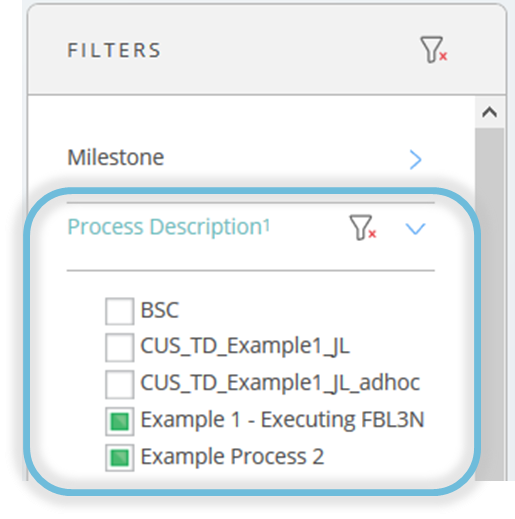
If more filters are used, the number increases. A single click on the filter symbol will annul the filtering.
A spyglass icon will appear when the cursor moves to the title line of the filter criteria, which allows users to search for particular process descriptions within a filter criterion, for example.

Profile
Filters are temporary, as long they are not saved to a user-specific profile.
Any number of profiles can be stored.

The profiles, as well as the Refresh and Undo and Redo buttons are above the filter section. The default profile can be overwritten. You can reset, save, create or delete a profile. Tooltips appear when you hover over an icon.
Configure Filter Criteria
Two central tables are used to configure the filter criteria. A certain number of criteria are readily available and can be enhanced on request.
Sometimes parameters can have unusual names. To change the parameter name to Fiscal Period from TASKLIST_PERIOD and to Fiscal Year from TASKLIST_YEAR, add the following entries to the table CUS_FCA_Workbench_Filter_Display_Names.

All users now see Fiscal Period and Fiscal Year filters.
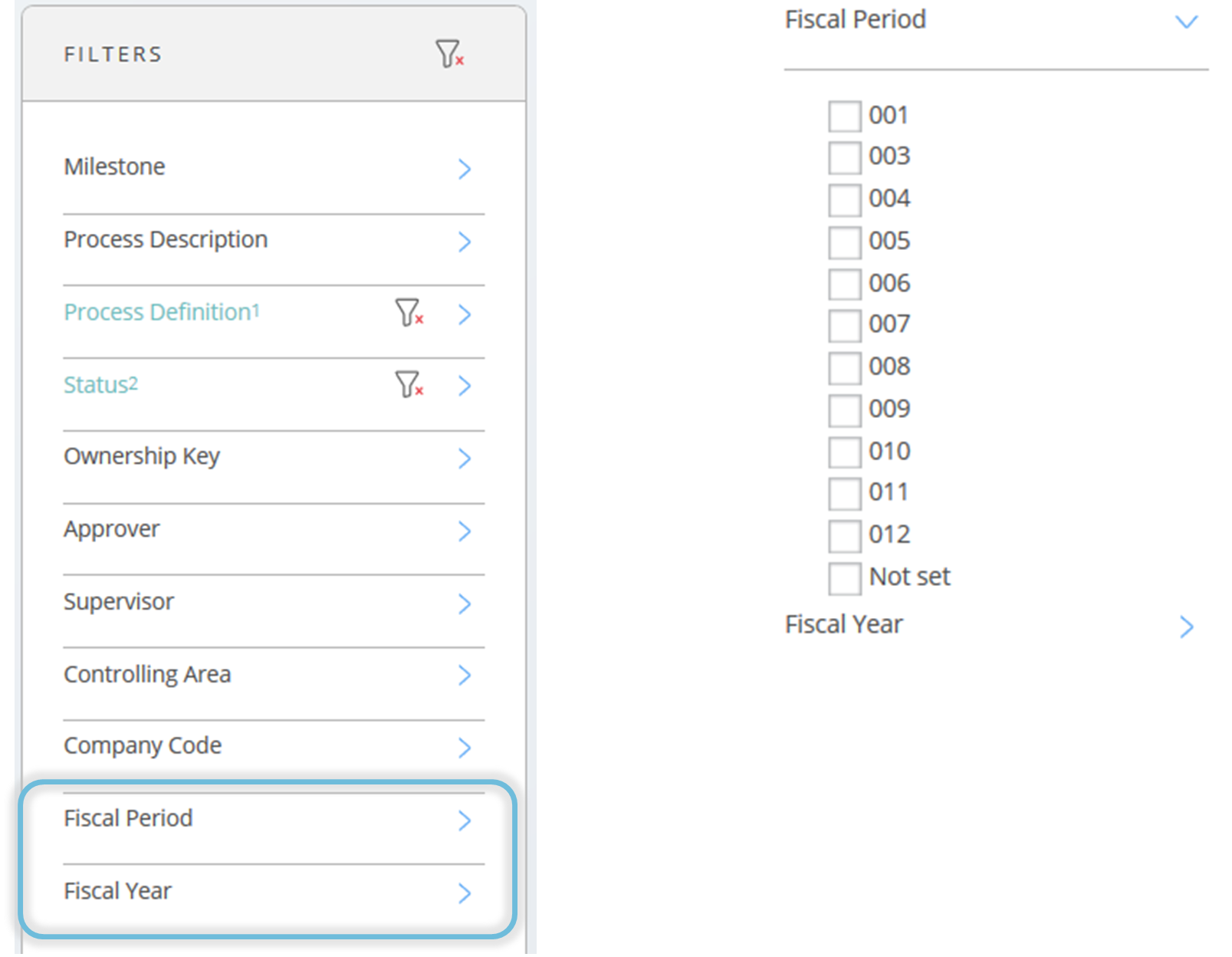
Example
Fiscal Period and Fiscal Year should be possible to select. Determine the appropriate parameters of the process, in this case TASKLIST_PERIOD and TASKLIST_YEAR. Add these entries in the table CUS_FCA_Workbench_BoardConfiguration.
Parameters
rootApplication- allows you to set the root Application for the task list.
financeTopic
